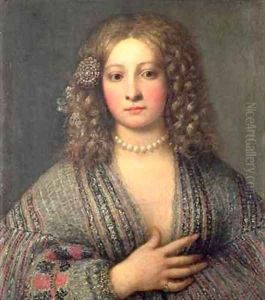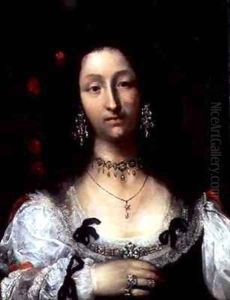Girolamo Ferrabosco or Forabosco Paintings
Girolamo Forabosco, also known as Girolamo Ferrabosco, was an Italian painter of the Baroque period, born in 1605 in Padua, Italy. He was part of the rich artistic environment of the 17th century, a period characterized by a dramatic and expressive style that sought to evoke emotional responses from viewers. Forabosco is particularly noted for his skillful portraiture, which exhibited a keen attention to detail and a profound understanding of human emotion.
His artistic journey began in his hometown, but his talent soon led him to venture to Venice, a city renowned for its vibrant artistic scene. Venice was the heart of the Baroque movement in Italy, and it was here that Forabosco would come into his own as a painter. Under the influence of Venetian masters, he developed a style that blended the rich colors and dramatic light effects characteristic of the Venetian school with his own personal touch, especially visible in his portraits and religious compositions.
Throughout his career, Forabosco received commissions from various prestigious clients, including members of the Venetian aristocracy and the church. His works were celebrated for their elegance and the psychological depth he brought to his depictions of subjects. Despite his success, detailed records of his life are somewhat scarce, and much of what is known about him comes from the study of his surviving works and contemporary accounts.
Girolamo Forabosco's contribution to the Baroque period extends beyond his paintings. He was part of a broader movement that sought to push the boundaries of artistic expression. His works are held in several important collections and continue to be studied for their technique and emotional depth. Forabosco passed away in 1676, leaving behind a legacy that continues to be appreciated by art historians and enthusiasts alike. His paintings not only reflect the artistic trends of his time but also offer a window into the society and culture of 17th-century Venice.

